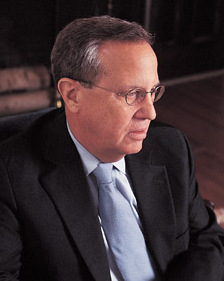 loading
loading
Q&A: Rick LevinThe streamlined university? Mark OstowView full image
Y: Like many universities, Yale hopes to save money by streamlining parts of finance and administration. You’ve brought in administrators from PepsiCo and General Mills, and they’ve found that Yale needs many more people for some basic tasks than corporations do. L: Our study showed that we did better than the other universities we benchmarked, but we were well below the standard of leading business corporations. If we can make administration more efficient, we can use the savings to increase support for academic programs and financial aid for students. Every unit has to process invoices and expense reimbursements, order office supplies, and make payroll. So we are trying to do a better job with routine business transactions traditionally performed in a decentralized way by moving them into a shared services center. In transactions of this type our error rates had been very high, because people in decentralized departments handle many different types of transactions, each at low volume. Specialists who focus on particular types of transactions can process them much more quickly, with many fewer mistakes. In our new shared services center, the error rate for travel reimbursements in just the first few months of operations is down to 3 percent. Y: What’s the cost, and what is your savings target? L: Before ’08 we had a plan to spend $288 million over a period of four years on software and consultants from Accenture to help us renew all our administrative systems. But with the recession, we just couldn’t afford to do the transition that fast or that expensively. We are relying now on our own people to install new systems one by one and train staff to use them. We now plan an IT investment of $10 to $15 million per year on this initiative over the next six years, much less than we originally planned. We originally expected to save in the range of $30 to $45 million a year. We are on track to get there, over time, by transitioning an increasing number of common functions into our shared services unit. The idea is to make this transition gradually. With the budgetary adjustments of the past three years, we have realized more than half of the monetary savings. But we are very lean now. With better systems and greater use of shared services, the strain on departments that feel understaffed will be mitigated and the quality of life in the workplace should improve. Y: At Yale and other institutions, some people fear that universities will be corporatized. At one of your last town meetings, you were asked, “Is Yale becoming more corporate?” What model do you think Yale should follow? L: We have a much larger number of decentralized units than any company you can think of, and the needs and purposes of those units are more diverse than in any company. The athletics department, the art gallery, and the nursing school all have very different educational purposes, public service missions, and conceptions of what constitutes a research program. We need decentralized leadership to decide how all those missions are best pursued. So we’re going to remain, by the standards of business corporations, extremely decentralized. Our response to the recession illustrates how we are different from large business corporations. Companies driven by the need to improve their bottom line moved extremely quickly to lay off workers. Many laid off ten thousand or more employees overnight. This is not the way we handled the recession at Yale. We smoothed out the adjustment to the downturn, spreading its impact over three years. This has had some adverse consequences—having a community feel somewhat demoralized for a longer period of time. But it also spared many hundreds of people their jobs. Y: Historically, especially at the oldest universities, the balance of power lay with the faculty. Over time that has shifted, so that central administration decides the general direction. Yale’s president in the early 1900s, Arthur Twining Hadley, pushed to strengthen the graduate and professional schools. You’ve pushed to take Yale global. At the same time, faculty members have tenure and no supervisors—presidents don’t just give them orders. Where do you feel the right balance lies? Which areas should be driven by the president, which by the faculty? L: In a university of Yale’s quality, the faculty must have the authority to develop curriculum and select new faculty. They are leaders in their fields of study and practice, and they have unique competence to set the curriculum and to assess the scholarship and teaching of candidates for appointment. The president, by contrast, is better positioned to assess the large issues that cut across departments and schools, such as the need to invest in the city of New Haven, the advantages of seizing an opportunity like the availability of the West Campus, or how the growing interdependence among nations should influence the opportunities available to our students. A healthy university needs leadership that respects the competence of the faculty on matters of curriculum and appointments, and yet has the imagination and confidence to pursue broad institution-wide strategies, even when the long-term benefits are not obvious to everyone.
The comment period has expired.
|
|